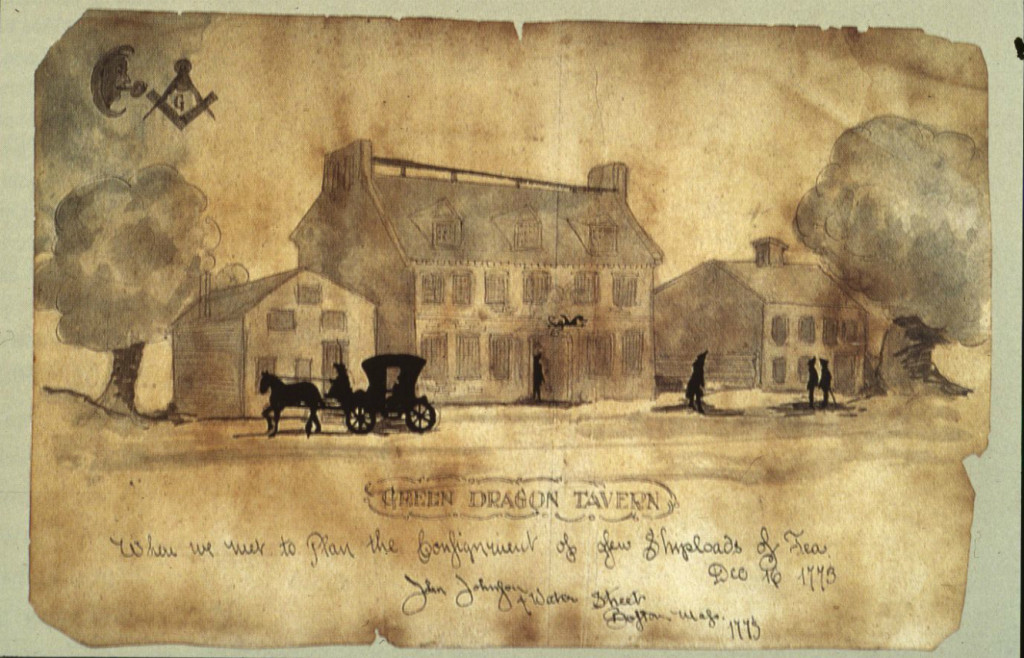Task Force Green Dragon: Preparation of the Environment in New England Taverns

Regardless of era, before active armed combat begins in a battlespace, commanders often have a voracious appetite for information, mostly to shape or prepare the environment for the future success of both non-lethal and lethal activities. These activities can range from information operations to surgical strikes. Today, operations that support preparation of the environment are often commanded and controlled out of modern command posts or joint operations centers. However, in the years leading up to the American Revolution, many of the patriot operations supporting preparation of the environment were planned in, and executed from New England’s taverns.
A notable venue for patriot preparation of the environment in Boston before hostilities began was the Green Dragon Tavern (GDT). Beyond its relationship to early patriot operations, little is known about the interior of the tavern, or what its patrons specifically drank inside its walls. What we do know is that it was first established as a public house in 1714, and that it was of brick construction sitting three stories tall. Yet, one can imagine that its interior was likely devoid of the charm and mahogany trappings of today’s modern Boston taverns.
Taverns were often nodes for information exchange in colonial America, and in some cases contained libraries of books and recently published pamphlets to stir discussions on subjects ranging from philosophy to war. As for the drinks imbibed there, colonial cocktails had gritty names such as “Whistle-Belly Vengeance” and “Rattle-Skull.” For patriot operatives working out of the GDT, we suspect they needed something simple, yet strong, to fortify their rebel constitutions. One such drink might have been the “Stone Wall”:
Drop two ounces of dark rum in a pint glass, then top with hard cider — preferably one with a touch of residual sweetness. For a modern touch, garnish with a lemon twist.
With what no doubt often amounted to liquid courage anchoring their resolve, and fueled by drinks like the Stone Wall, underground patriot groups shaped the environment for future struggle over the colonies.
The Mechanics were an early operational and intelligence arm of the patriot movement, and conducted many actions similar to today’s SOF core activities, often leading to patriot dominance in the colonial information environment. These men established what might equate to a task force command post in the GDT. Inspired by this troop of shadowy patriots in the years preceding the American Revolution, similar regional task forces were established by the Sons of Liberty and other similar elements to conduct decentralized, nodal operations to prepare the environment for active armed combat and eventual conflict resolution. This networked approach would prove invaluable in combating and eventually defeating hierarchically structured British forces across the eastern seaboard. However, it was the patriots running operations out of the GDT that took the first critical steps in shaping the operational environment and would eventually support both American non-lethal and lethal actions.
First, let us examine one of the more notorious activities planned out of the GDT, the Boston Tea Party. Seen through a modern doctrinal lens, the Boston Tea Party was a bloodless, direct action raid on harbored maritime platforms to reduce and destroy a British government high value target, taxable tea. The result of the Boston Tea Party (though some say it may have been unintended) was a strategic victory in the information environment, which in turn led to increased support for non-lethal actions, such as the establishment of a constitution for the colonies to manage taxation.
Another infamous event that is often attributed to GDT-based planning was Paul Revere’s Ride. It is important to note that Revere was supported by an element similar to an advanced force operations team and enabled by human intelligence infrastructure. His primary role was essentially the processing, exploitation, and delivery of intelligence to Minutemen, who through loose mission command, massed combat power and eventually repelled a British penetration into patriot sanctuaries through lethal action at the tactical level. This supported lethal action, though tactical in nature, again resulted in strategic-level effects in the information environment with the “Shot Heard Round the World,” which initiated active armed conflict of the American Revolutionary War.
Though preparation of the environment continued in many forms through the course of the war across the colonies, the GDT’s early active years proved critical in shaping New England for the eventual arrival of active armed combat. Taverns continued to play a prominent role in operations, providing a place to prepare and conduct non-lethal and lethal actions. A simple scan of this list of Gen. George Washington’s headquarters during the Revolutionary War proves that taverns continued on as valuable command posts across the range of military operations. For the military strategists and planners of today, let us always remember the value of preparing the environment, and the importance of a stiff drink.
Capt. Matt Hutchison and Capt. Erick Waage are cyber officers and members of the Army Cyber Institute at West Point’s Strategic Initiatives Group. They have served multiple deployments overseas in cyber-related positions supporting both conventional and special operations forces. The views expressed in this article are those of the authors and do not reflect the official policy or position of the United States Military Academy, Army Cyber Command, the Department of the Army, U.S. Cyber Command, the Department of Defense, or the U.S. Government.

